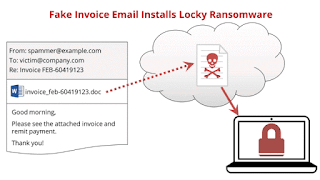RIGHTS OF THE ACCUSED WHO IS ARRESTED In CYBER CRIME MATTER
1. Protection against arbitrary or unlawful arrest (Article 22 of the Constitution and Section 41, 55 and 151 of Cr.P.C.)
2. Protection against arbitrary or unlawful searches (Sees. 93, 94, 97, 100(4) to (8). and 165 of Cr.P.C.)
3. Protection against “Double Jeopardy” (Article 20(2) of the Constitution and Section 300 of Cr.P.C.)
4. Protection against conviction or enhanced punishment under ex-past facto law (Article 20(1) of the Constitution)
5. Protection against arbitrary or illegal detention in custody (Article 22 of the Constitution and Sees. 56, 57 and 76 of Cr.P.C.)
6. Right to be informed of the grounds, immediately after the arrest (Article 71(1) of the Constitution and Section 50 of Cr.P.C. as also Sees. 55 and 75 of Cr.P.C.)
7. Right of the arrested person not to be subjected to unnecessary restraint (Section 49 of Cr.P.C.)
8. Right to consult a lawyer of his own choice (Article 22(1) of the Constitution and Section 303 of Cr.P.C.)
9. Right to be produced before a Magistrate within 24 hours of his arrest (Article 22(1) of the Constitution and Sees. 57 and 76 of Cr.P.C.)
10. Right to be released on bail, if arrested (Sees. 436, 437 and 439 of Cr.P.C., also Sees. 50, 20 and 167 of Cr.P.C.)
11. Right not to be a witness against himself (Article 20(3) of the Constitution)
12. Right to get copies of the documents and statements of witnesses on which the prosecution relies (Sees. 173(7), 207, 208 and 238 of Cr.P.C.)
13. Right to have the benefit of the presumption of innocence till guilt is proved beyond reasonable doubt (Sees. 101-104 of Evidence Act)
14. Right to insist that evidence be recorded in his presence except in some special circumstances (Section 273 of Cr.P.C., also Section 317 Cr.P.C.)
15. Right to have due notice of the charges (Sees. 218, 228(2), 240(2), etc. of Cr.P.C.)
16. Right to test the evidence by cross-examination (Section 138 of Evidence Act)
17. Right to have an opportunity for explaining the circumstances appearing in evidence against him at the trial (Section 313 of Cr.P.C.)
18. Right to have himself medically examined for evidence to disprove the commission of offence by him or for establishing commission of offence against his body by any other person (Section 54 of Cr.P.C.)
19. Right to produce defence witnesses (Section 243 of Cr.P.C.)
20. Right to be tried by an independent and impartial Judge (The Scheme of Separate of Judiciary as envisaged in Cr.P.C., also Sees. 479, 327, 191, etc. of Cr.P.C.)
21. Right to submit written arguments at conclusion of the trial in addition to oral submission (Section 314 of Cr.P.C.)
22. Right to be heard about the sentence upon conviction (Sees. 235(2) and 248(2) of Cr.P.C.)
23. Right to fair and speedy investigation and trial (Section 309 of Cr.P.C.)
24. Right to appeal in case of conviction (Sees. 351, 374, 379, 380 of Cr.P.C. and Arts. 132(1), 134(1) and 136(1) of the Constitution)
25. Right not to be imprisoned upon conviction in certain circumstances (Section 360 of Cr.P.C., and Section 6 of the Probation of Offenders Act)
26. Right to restrain police from intrusion on his privacy (Article 31 of the Constitution)
27. Right to release of a convicted person on bail pending appeal (Section 380 of Cr.P.C.)
28. Right to get copy of the judgment when sentenced to imprisonment (Sec.363 of Cr.P.C.)







